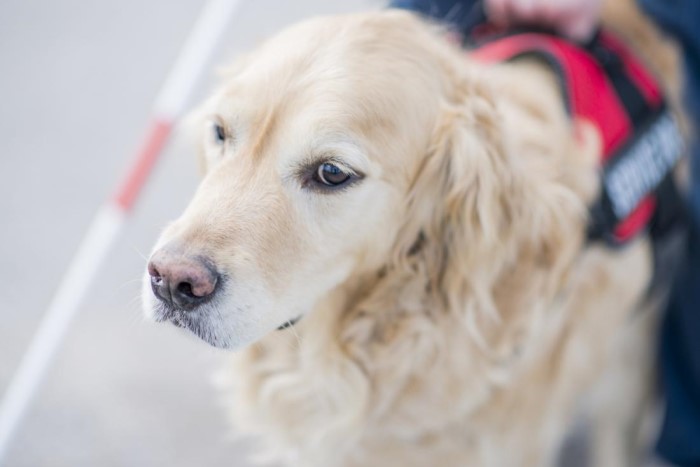If you have a mental illness, a service dog can be an invaluable resource. A service dog can detect negative symptoms in its owner and alert its owner to their presence. This ability to sense negative symptoms helps people suffering from anxiety and depression. A service dog can also alert its owner to danger. Read on to learn more about the different types of service dogs and their uses. And remember, no dog is perfect, but some of them are better than others.
Guide dogs assist visually impaired people
Guide dogs are highly trained animals that assist visually impaired people. They can read and obey verbal commands to keep pace. A guide dog’s training is essential for his job, so he must understand the rules of the road. Guide dogs should always be on their owner’s side and should not be distracted while working. Guide dogs are considered a member of the family by their owners.
A guide dog’s training program includes a year-long period spent living in the household of a volunteer. During this time, the puppy is exposed to different people, sounds, and situations to help them become accustomed to its new role. After the puppy has been home for a year, it goes to a training school for a formal five or six-month training. During this time, the dog is assessed and his progress is constantly monitored. Some instructors focus on deaf and blind people, others on multiple needs.
Allergy detection dogs detect allergens
Allergy detection dogs can alert to allergens by sniffing them out. However, they must first be trained to recognize the allergens. Allergens may be airborne or multiple. These dogs may not be trained to detect allergens that are not present in the home. The training process involves imprinting the dog with the allergens so that it can recognize them and alert them when they come into contact with them.
Training an allergy detection dog can be an extremely rewarding and lifesaving experience. It’s important to note that you must start training your dog while it’s still a puppy, as the basic behaviors will be easier to teach later on. After all, early training is the best time to establish the foundations of allergy detection. You’ll need to set up rewards and training methods for your dog, and then choose the method you’d like to train the dog.
Seizure response dogs detect oncoming panic or anxiety attacks
Some seizure response dogs are specially trained to recognize oncoming panic or anxiety attacks and alert their human companions. They can even call for assistance or protectively position themselves. Moreover, larger support dogs can even move their human owners to safer locations. However, seizure alert behavior in dogs is not guaranteed, even when the dog is properly trained. To be eligible for a seizure response dog, an individual must experience at least one epileptic seizure every month. Absence seizures do not qualify as qualifying seizures because they lack a physical manifestation. Similarly, dogs must have moderate to severe hearing loss.
The symptoms of a seizure in dogs are often similar to those of humans. They include muscle twitching, loss of consciousness, and drooling. In addition, some dogs also make paddling motions with their legs and poop or pee during the seizure. Moreover, these dogs may appear disoriented, wobbly, and try to hide.
Mobility assistance dogs assist people with mobility issues
The term “mobility assistance dog” refers to a service dog that assists people with mobility problems. To qualify for this service, a person must have a physical or psychiatric disability. While this is usually true, assistance dogs may also assist people with balance issues or medical emergencies. These dogs are legally protected and enjoy certain rights, including the right to transportation and lodging. Because they are trained to help disabled people, they are also protected from discrimination.
There are several types of mobility assistance dogs. Some dogs assist people with balance and coordination problems, such as Parkinson’s disease and multiple sclerosis. Others assist with walking, retrieving objects, opening doors, and pulling wheelchairs. A mobility assistance dog’s job is not just to help people with mobility problems; it is also a canine companion who can give a hand when you need it. Mobility assistance dogs are not replacements for canes. These dogs help their owners achieve independence.

